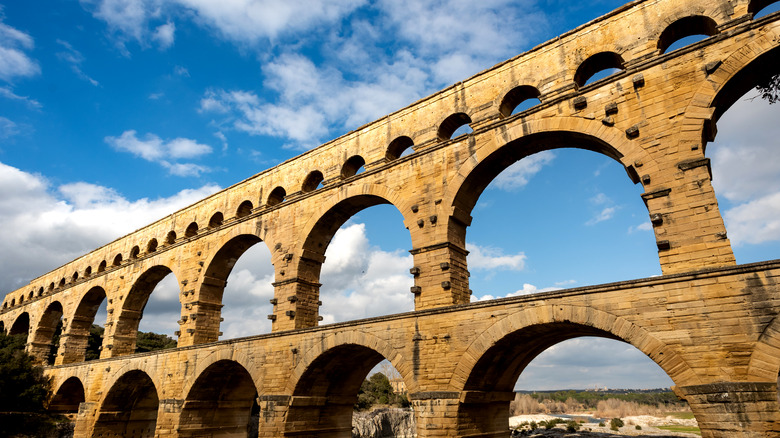How The Ancient Romans Made Ice
Many technical marvels from the Ancient Roman empire — spanning roughly 27 B.C.–476 A.D., according to Rome — remain with us today. As History tells us, roads, aqueducts (pictured above), and even bound books and concrete are among the many familiar things in the everyday lives of modern people that came to us from the Roman world. Marking a date on the calendar? Well, the calendar system we use today is closely based on the Julian calendar, and you guessed it — the Julian calendar comes from Rome.
One modern convenience that some fail to realize was also enjoyed by the ancient Romans is ice. Ice serves many purposes today, but perhaps most importantly, in the preservation of food. Without ice, modern civilization would be very different indeed. These days, ice comes from freezers, and freezers run on electricity. How could the ancient Romans, among other ancient civilizations, make ice? There were, in fact, a few common techniques.
One of the many ways Ancient Romans enjoyed ice is perhaps the most obvious. They didn't make it at all, but instead, simply harvested it from snowy peaks and high elevations, selling it in what were called "Snow Shops" where ice and snow could be purchased by average people — a common practice in third century Rome, according to Ice Cold Justice.
They harnessed the power of physics
One of the more ingenious approaches, however, was developed by the Persians, and it required the use of a structure called a yakhchāls. As Science Focus reports, ancient people understood for years that when frozen water is stored in a sufficiently deep hole lined with straw, it would last throughout the summer. The Ancient Persians took this one step further, actually producing ice even in the summer months, using what were called yakhchāls. According to History of Refrigeration, there's written evidence that the Ancient Romans also used this approach, even when the weather was warm.
As explained by Culture Trip, yakhchāls were nothing more than a deep hole in the ground covered by a heat insulating material. They served several purposes, such as preserving naturally occurring ice, or even storing food. These structures, however, could make ice all on their own, even when it was hot outside.
Here's how it works: Air enters the structure through a hole at the top. Store enough water in the pit, and temperatures drop, while hot air escapes from the opening at the top. These were well-insulated structures, using clay and goat hair among other substances, and as temperatures dropped, cold air was trapped, and ice would form, even in the desert. What's clear, without yakhchāls, man-made ice may have never developed, changing the course of history. Something to think about, next time you enjoy an ice cream cone.

